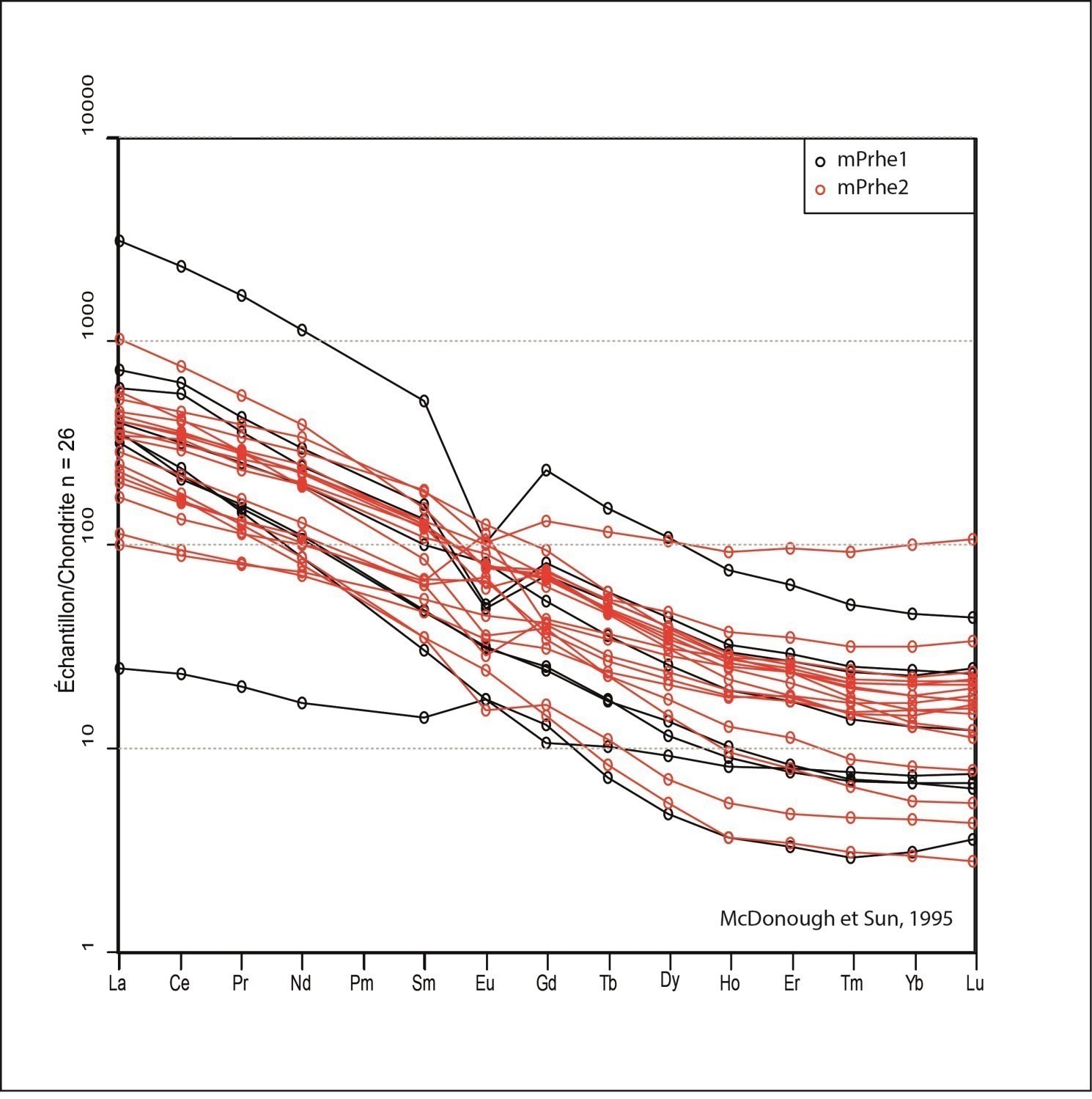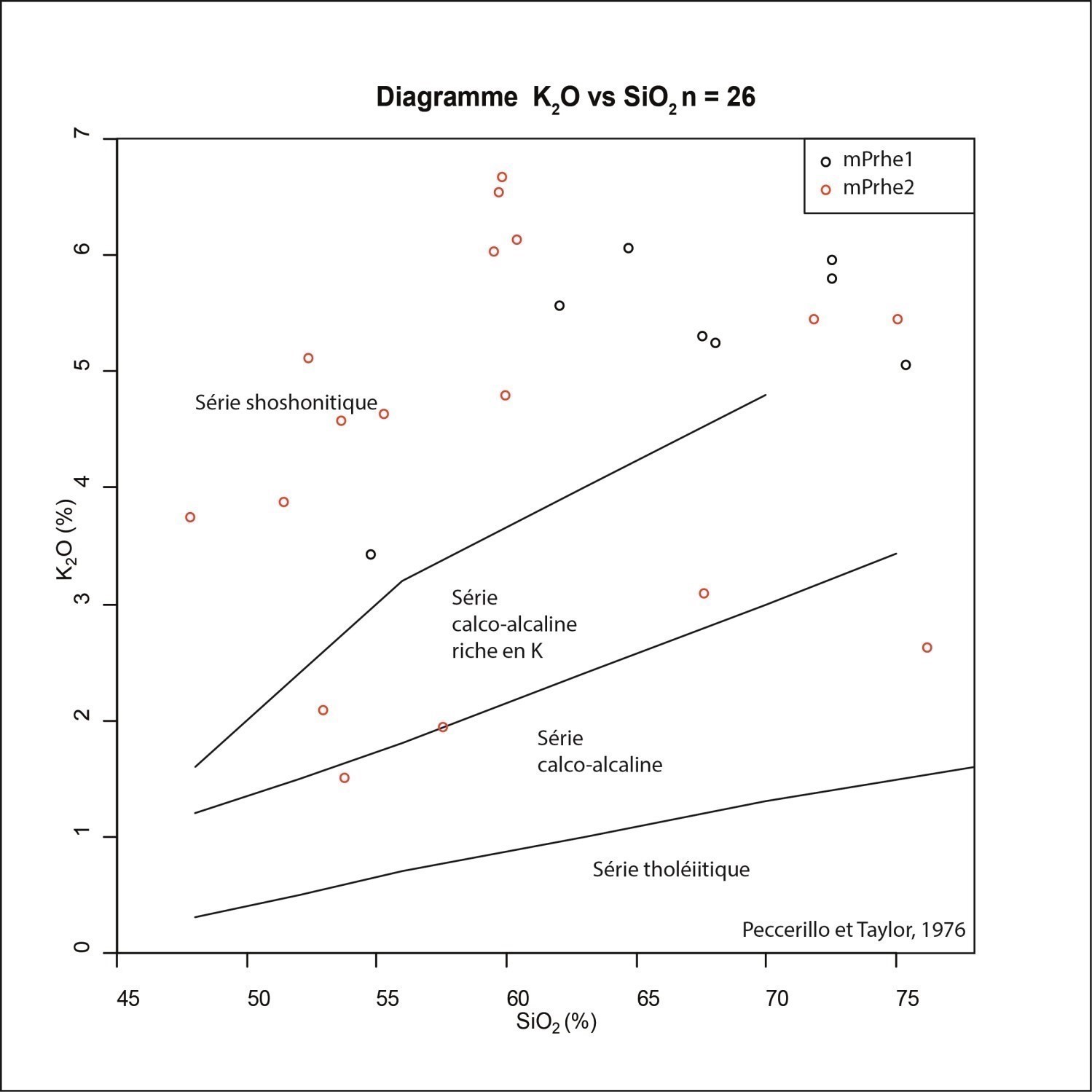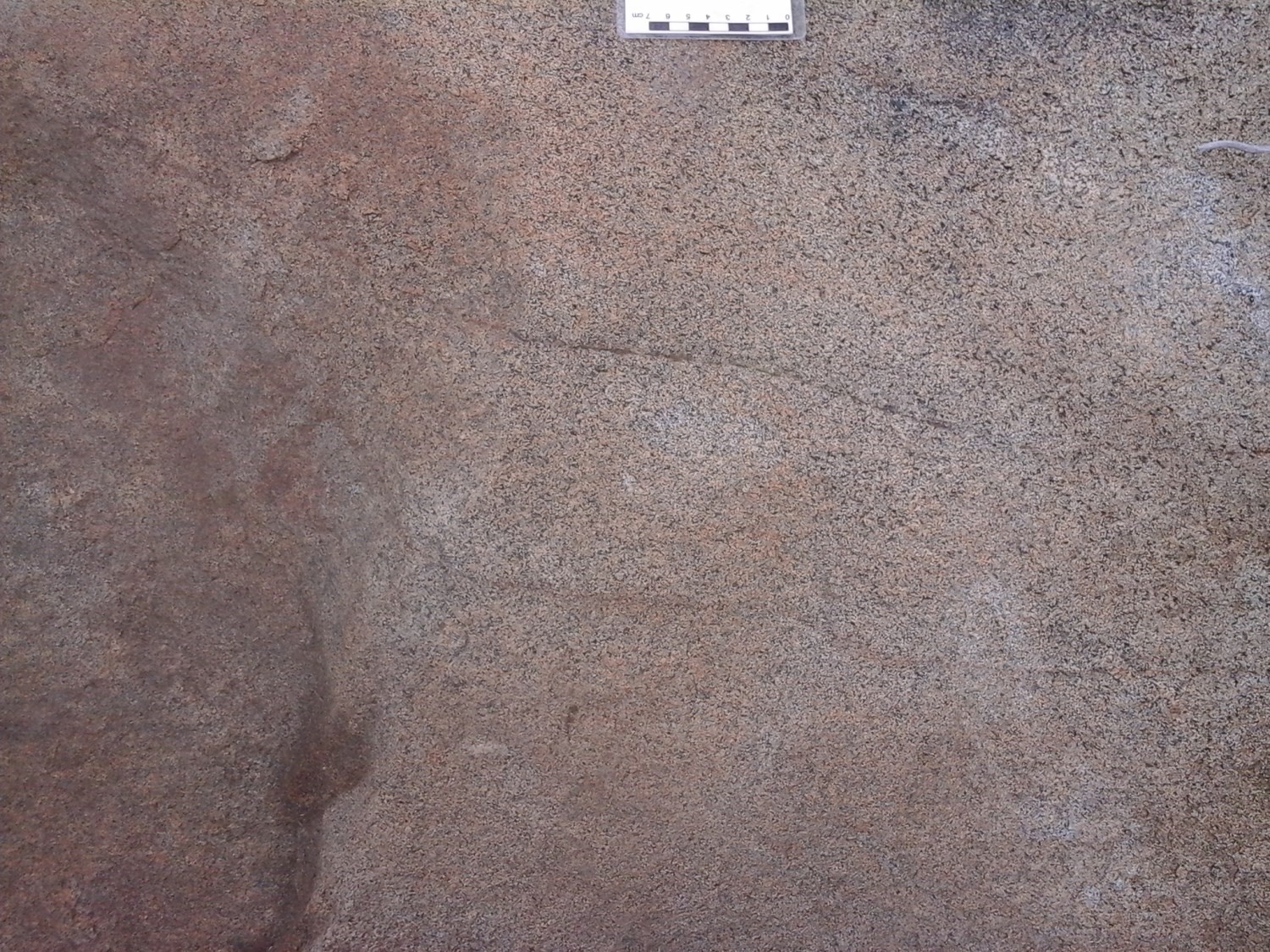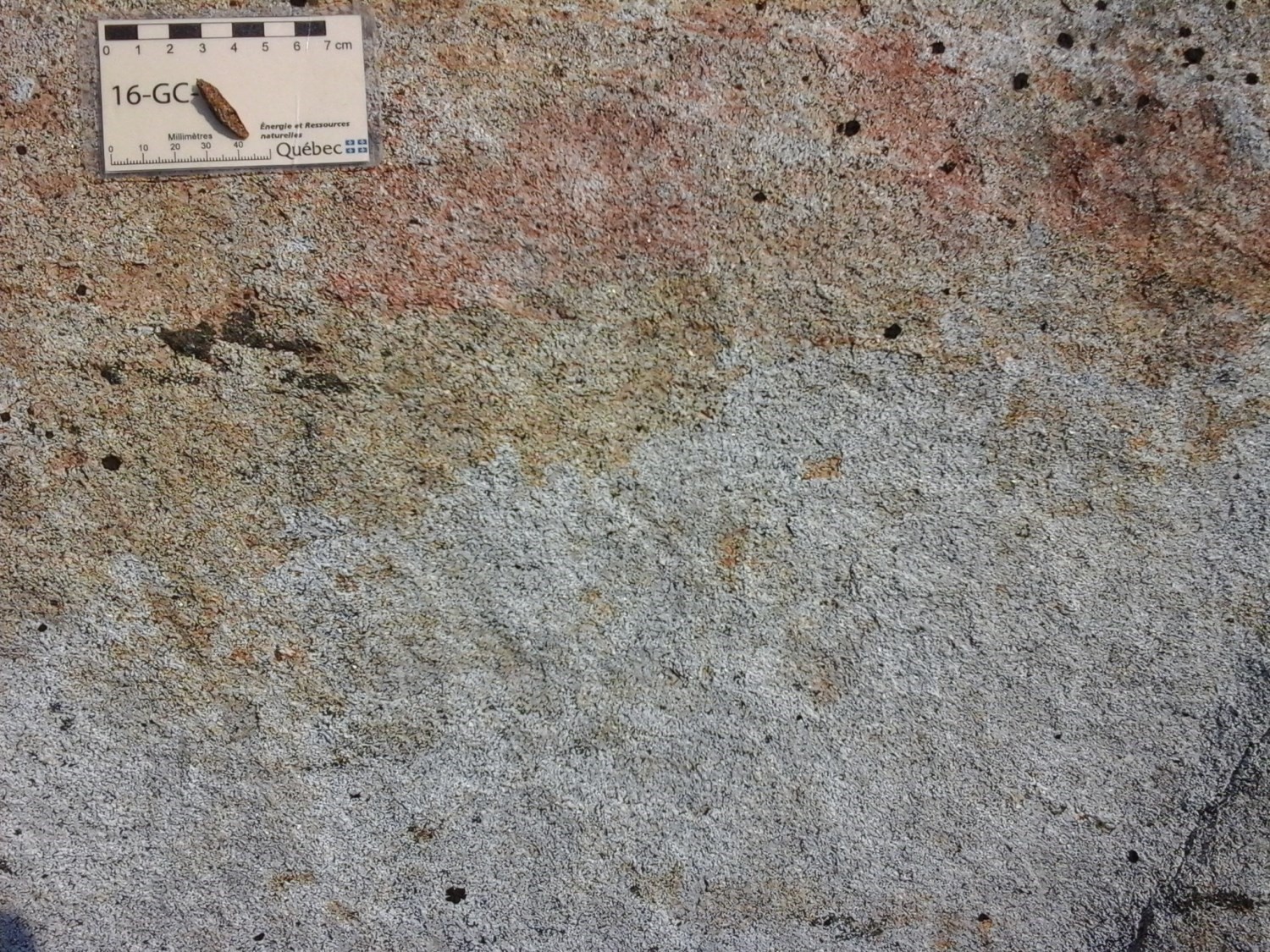
| Author: | Moukhsil and Côté, 2017 |
| Age: | Mesoproterozoic |
| Reference section: | OAGN-type gabbronorite outcrop (16-AM-1) |
| Type area: | Haut-Saint-Maurice (NTS sheet 31P14) |
| Geological province: | Grenville Province |
| Geological subdivision: | Allochton |
| Lithology: | Intermediate to mafic intrusive rocks |
| Type: | Lithodemic |
| Rank: | Suite |
| Status: | Formal |
| Use: | Active |
None
Background
The Rhéaume Intrusive Suite was defined by Moukhsil and Côté (2017) during mapping of the Wemotaci area in Haut-Saint-Maurice.
Description
The Rhéaume Intrusive Suite, mainly of syenitic composition, outcrops as rounded intrusions or decametric dykes cutting surrounding rocks. This unit is highly magnetic and easily identifiable on aeromagnetic maps. The chondrite-normalized rare earth element (REE) diagram (McDonough and Sun, 1995) show light REE enrichment with respect to heavy REE. Some samples also have positive europium anomaly. These rocks are potassium-rich (K2O >1%) and plot in the field of intraplate granites (Pearce et al., 1984).
Rhéaume Intrusive Suite 1 (mPrhe1): Fe-Ti-P-Oxide Gabbronorite, Minor Amounts of Syenite, Quartz Syenite, Syenogranite, Granite, Mangerite and Monzonite
Unit mPrhe1 consists of highly magnetic gabbronorite enriched in Fe-Ti oxide (hemo-ilmenite), magnetite and apatite that can be classified as OAGN (Oxyde-Apatite-Gabbronorite, acronym proposed by Dymeck and Owens, 2001). Minor amounts of syenite, quartz syenite and syenogranite are associated with it. Gabbronorite is composed of green hornblende, orthopyroxene, clinopyroxene, plagioclase, biotite, and accessory zircon, apatite and carbonates. Under the microscope, orthopyroxene crystals have an amphibole rim (uralitization), while plagioclase is locally myrmekitic. Clinopyroxene is biotitized in large crystals or as exsolutions parallel to cleavage. Apatite is present in varying proportions as small inclusions in clinopyroxene, biotite and feldspars. Locally, magnetite contains pyrrhotite inclusions.
Mangerite is composed of biotite, orthopyroxene, clinopyroxene, plagioclase, K-feldspar and carbonates as acessory minerals. Under the microscope, orthopyroxene is coronitic with a clinopyroxene rim. This suggests that clinopyroxene is metamorphic, while orthopyroxene is of magmatic origin. Carbonates are found in fractures or as large anhedral crystals. Tabular crystal biotite accounts for 7% of the rock. Opaque minerals are associated with pyroxenes.
Rhéaume Intrusive Suite 2 (mPrhe2): Syenite, Fe-Ti-P-Oxide Gabbronorite, Minor Amounts of Orthopyroxene Syenite, Monzonite, Syenogranite, Monzogranite and Mangerite
Syenite is usually greyish or salmon pink with pinkish K-feldspar crystals distributed here and there in the rock. Trace nepheline was observed in a few syenite samples (methylene blue staining). Medium-grained syenogranite is salmon pink. All rocks of this unit contain varying amounts of biotite, clinopyroxene and magnetite. Rock typically has magmatic fabric and solid-state deformation is weak. Coarse-grained gabbronorite is porphyritic in places. Orthopyroxene syenite is greyish to pinkish in fresh exposure, medium grained and magnetic. Biotite and green hornblende are mainly observed near and around orthopyroxene crystals. Plagioclase forms laths in contact with K-feldspar (microcline) and is locally perthitic. Apatite and zircon are present as accessory minerals. Orthopyroxene syenite also contains enclaves of fine-grained grey syenite.
Thickness and Distribution
This unit mostly outcrops in sheet 31P14 as rounded intrusions, from one to tens of kilometres in size, highly magnetic and easily identifiable on aeromagnetic maps.
Dating
None.
Stratigraphic Relationship(s)
The Rhéaume Intrusive Suite intrudes into the Pope Plutonic Suite.
Paleontology
Does not apply.





